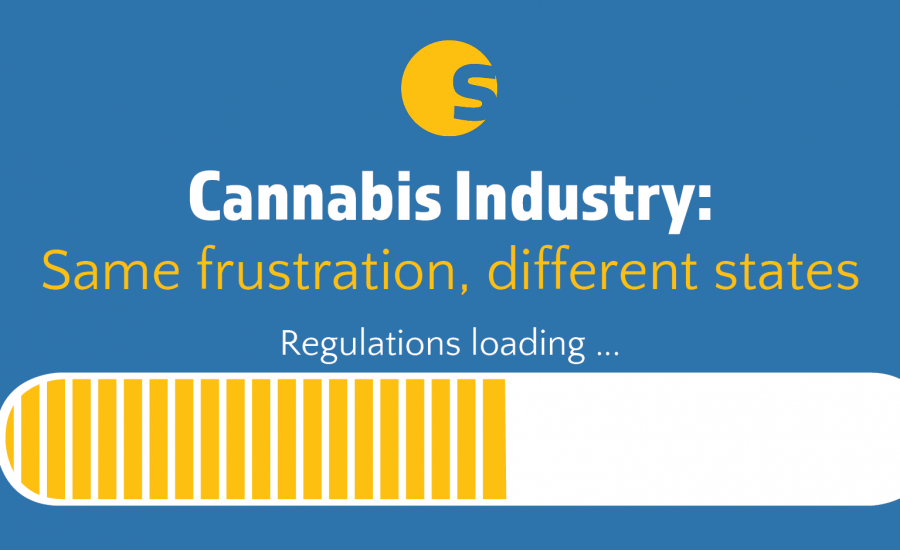We all know the cannabis industry is a rapidly changing, and more often than not, a frustrating industry to be involved in. Laws vary by state, and even within one state can vary greatly at the local level as well. Legalization comes in many forms, and these differences can drastically affect businesses and consumers alike.
As a regulatory analyst at Simplifya, I follow rule changes in the cannabis industry closely. In doing so, I notice a lot of things that the average person might overlook. Unless you keep up on the industry for your job, or if you’re like myself and have a somewhat odd fascination with the monotony that can be cannabis regulation, you probably don’t pay attention to everything going on in the cannabis space throughout the country.
Not to worry, I’ll keep up on the quirks of this ever-changing industry for you! Lately, I’ve found the developments in both California and Utah to be of particular interest.
Will California ever have permanent rules?
If you’ve been keeping up, you’ll know that the businesses in California have experienced quite a rollercoaster ride over the past year. The agencies have been fine-tuning the cannabis industry’s rules throughout the year, with the current rulemaking process ongoing since July – and it’s not done yet.

The current emergency regulations, re-adopted in June, were set to expire on December 3rd with the hope that permanent rules would be complete by then. However, that date has come and gone, and the regulators had only just submitted their emergency rules for final review on December 3rd. The review process is set to take an additional 30 business days (the submitted rules can be viewed here: BCC, CDPH, CDFA).
This means the permanent rules will stay in effect until at least mid-January. For businesses in California, this is just another example of the headaches they have had to endure as the state regulates the cannabis industry. Many have concerns over some provisions that have been added this go-around, such as a ban on white labeling that could have major ramifications for some of the state’s largest manufacturers.
It seems that even with a full year to revise the permanent rules, California regulators still haven’t figured it all out. I’d venture to guess that we can expect to see more changes to the rules in 2019 as regulators continue fine-tuning, but we’ll have to wait to see whether those changes will be for better or for worse.
Utah Lawmakers accept the will of the people – sort of
Meanwhile, in Utah, things are shaping up for an interesting 2019. You may remember that just a month ago Utahn’s passed Prop 2, which legalized medical cannabis in the Beehive State. While a majority of citizens supported the proposition, lawmakers felt a little differently.

As a result, just days after Prop 2 officially became law, the legislature passed the Utah Medical Cannabis Act during a special session. This new act has been in the works since October when legislators began working on a proposal to address the concerns of both the proponents and opponents of Prop 2. The decision by legislators to override the voter-approved measure has been controversial to say the least.
Many are concerned about some of the changes seen in the Utah Medical Cannabis Act – particularly a big cut from 40 to only seven permitted dispensaries, stringent restrictions on edible products, a removal of several qualifying conditions, and a reliance on pharmacists to operate the dispensaries. This last issue regarding pharmacists is particularly troubling. When Oklahoma adopted a similar rule earlier this year, the DEA stated any pharmacist dispensing marijuana could be at risk of losing their license.
These concerns have already resulted in a lawsuit aimed at blocking the compromise legislation from replacing the original initiative. Whether the suit will be successful still remains to be seen, but regardless of the outcome, there will be some Utahns who are not pleased with the result.
